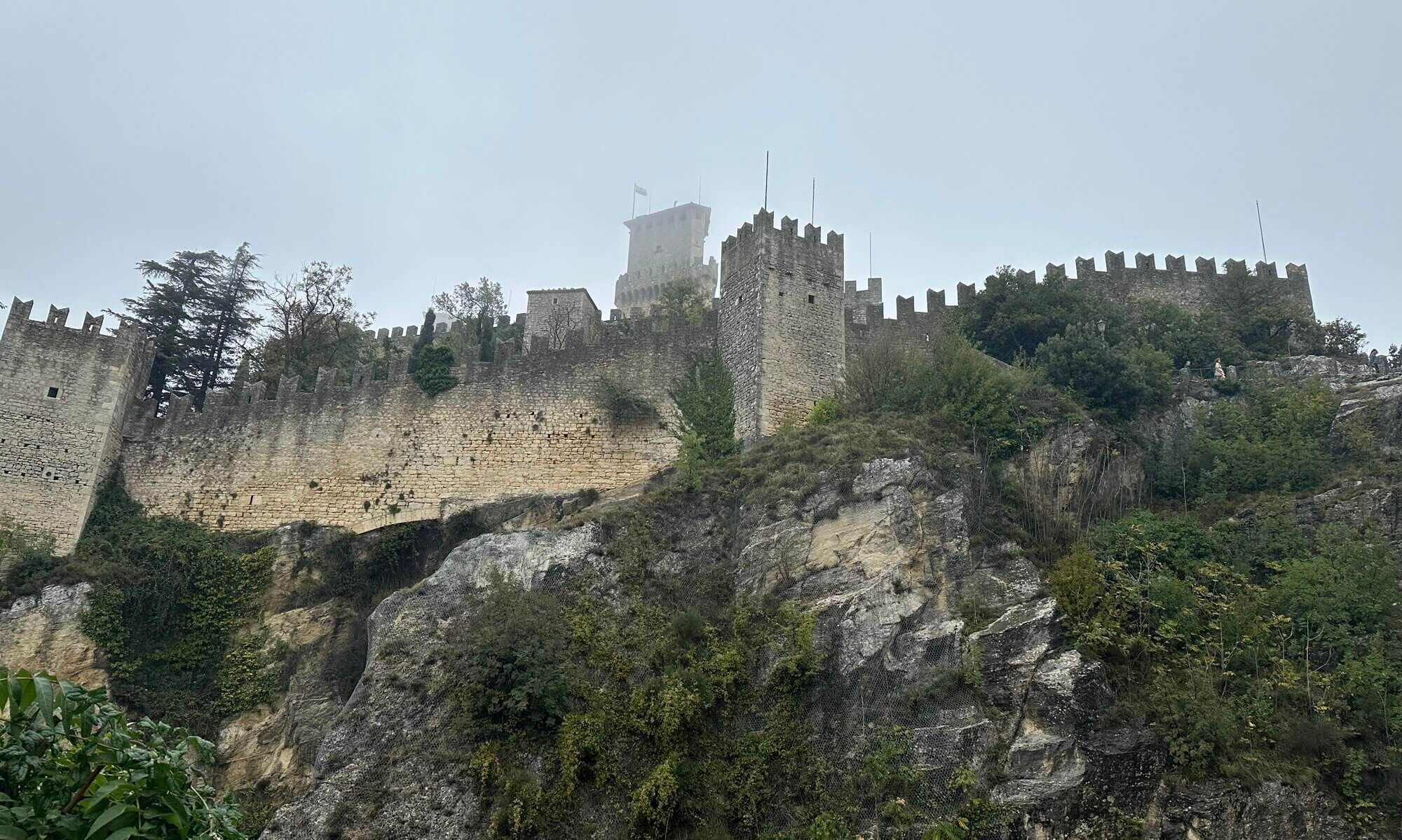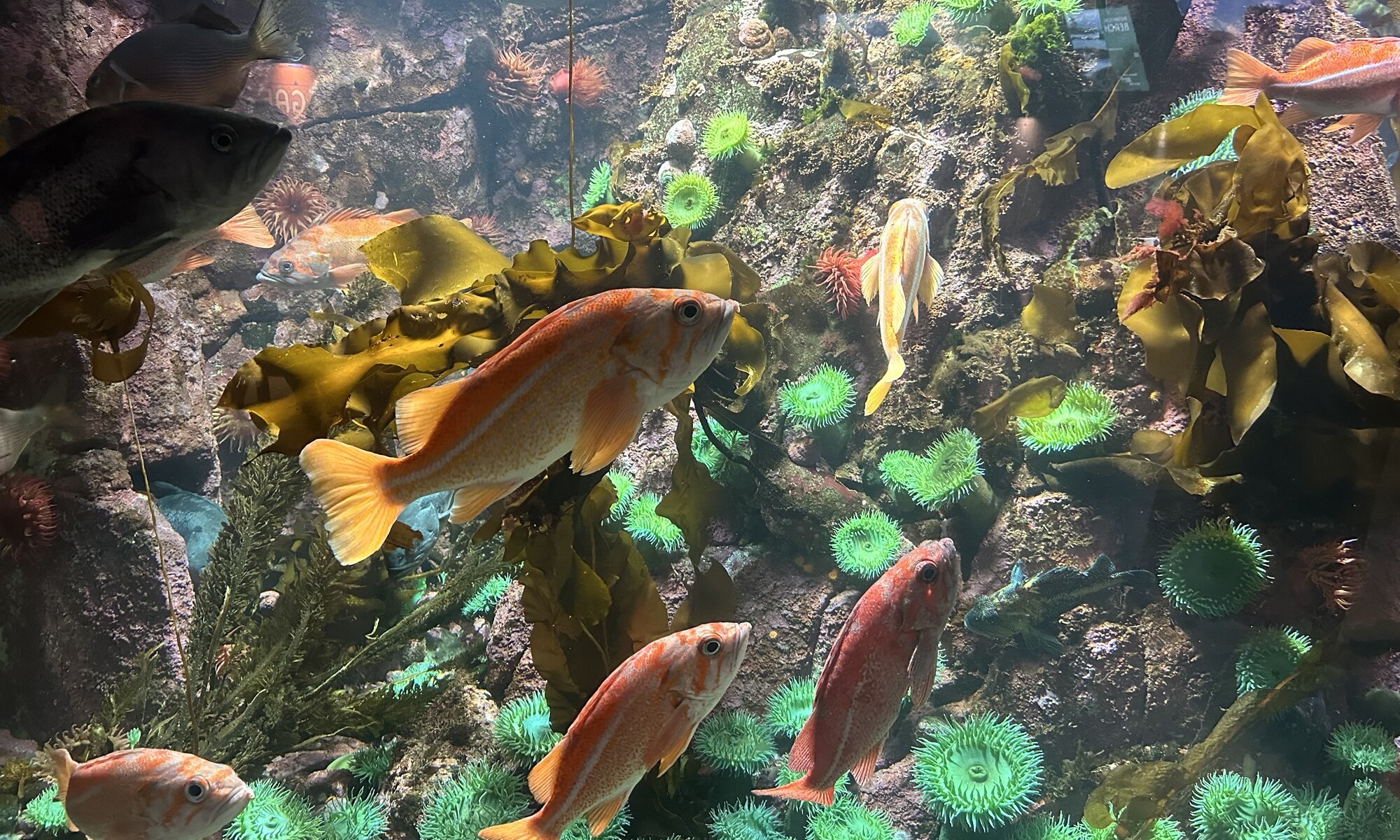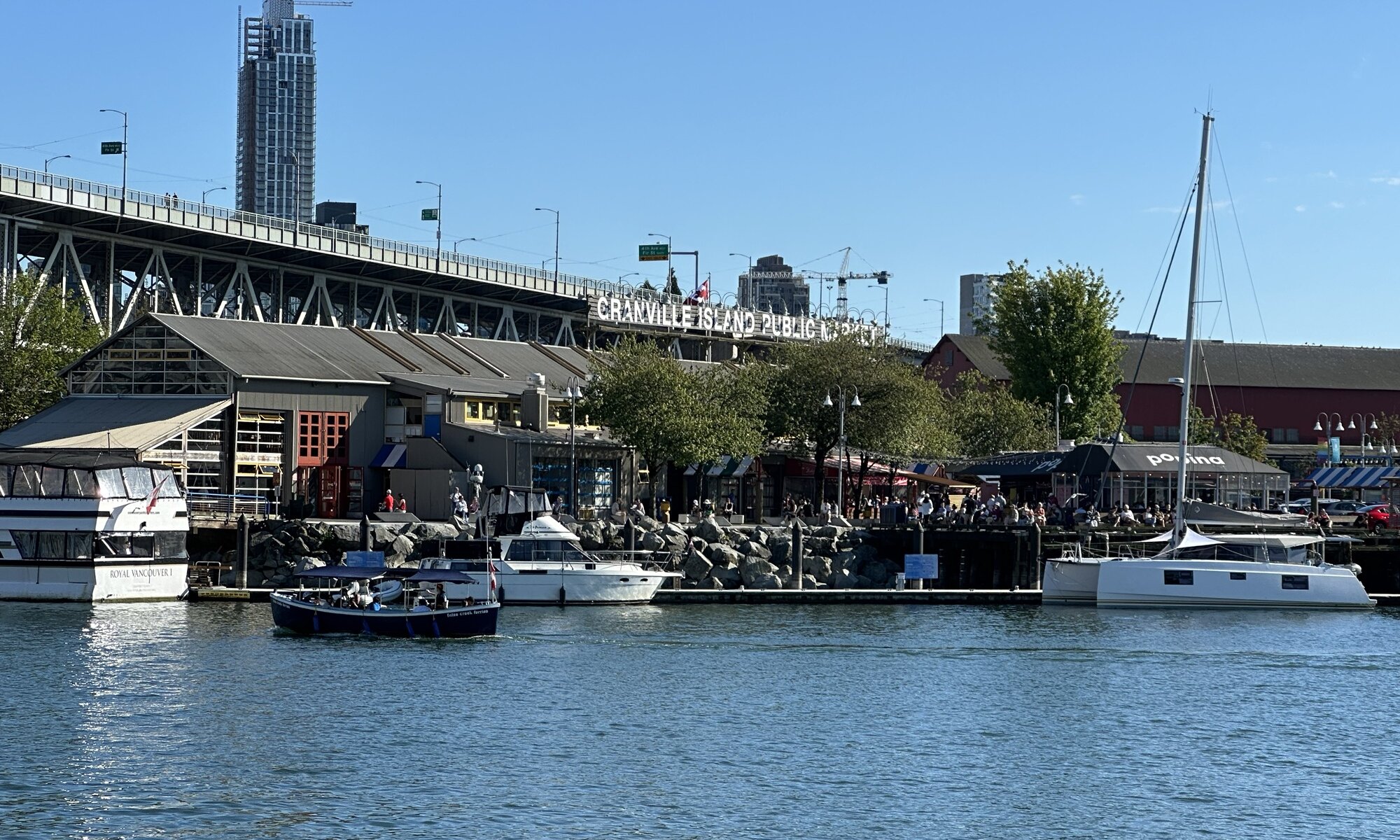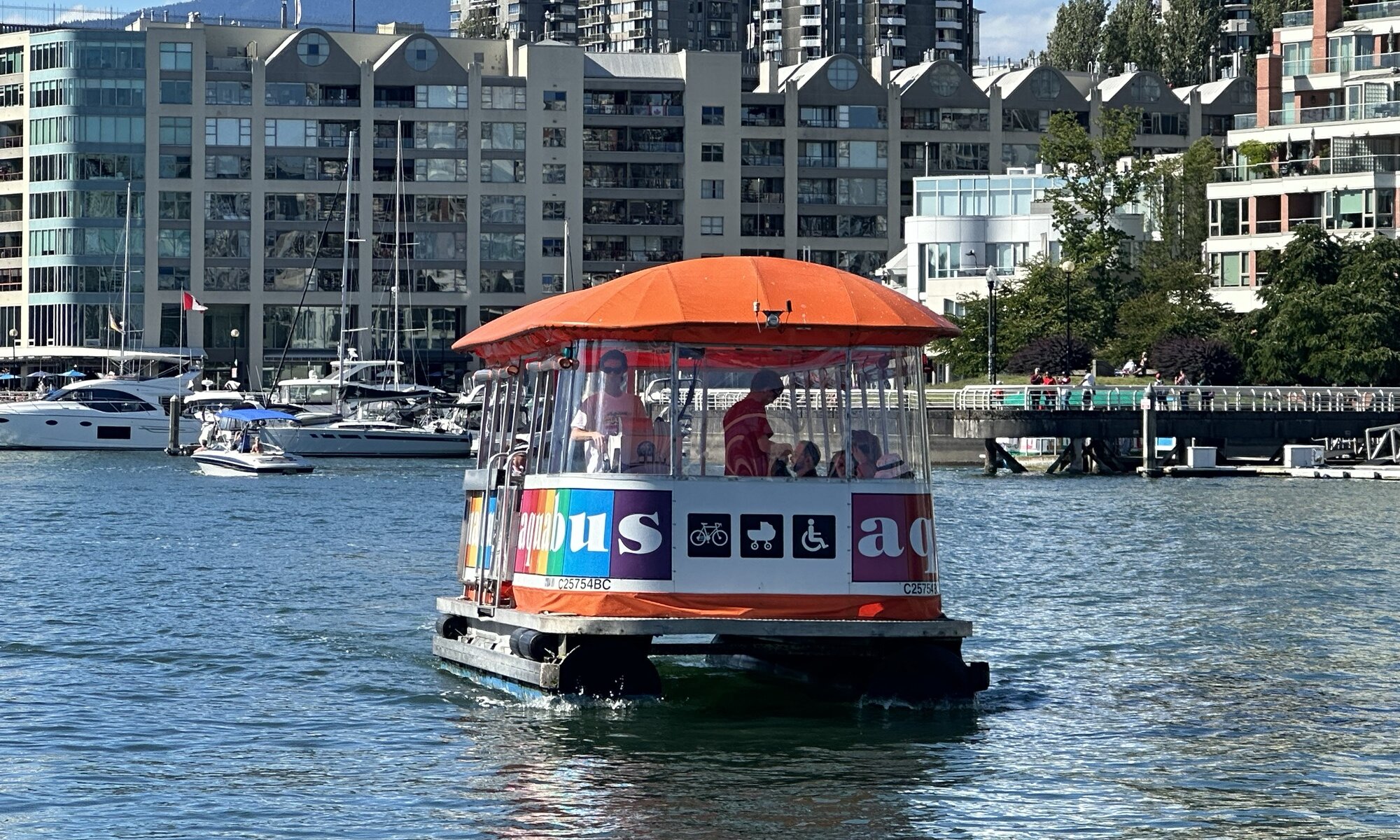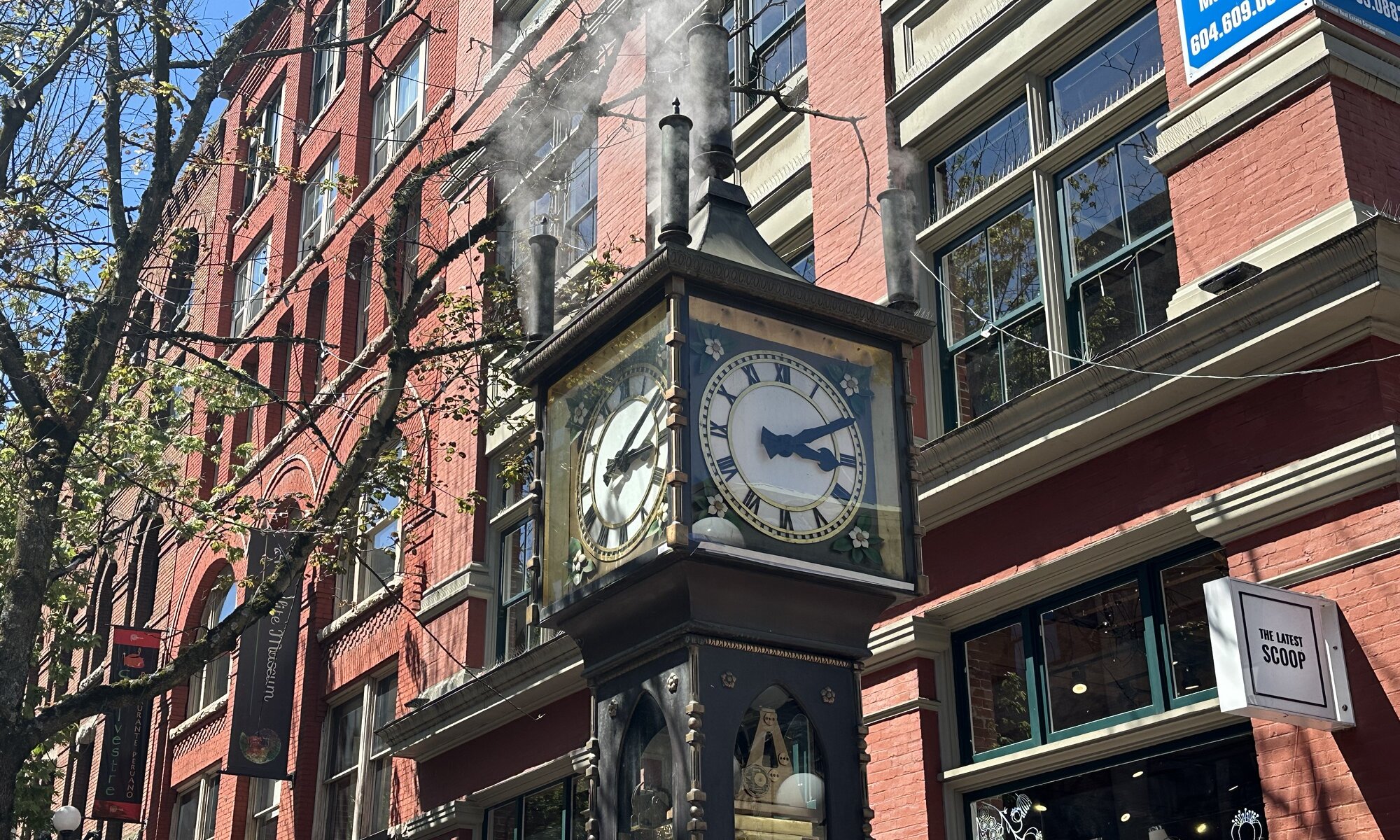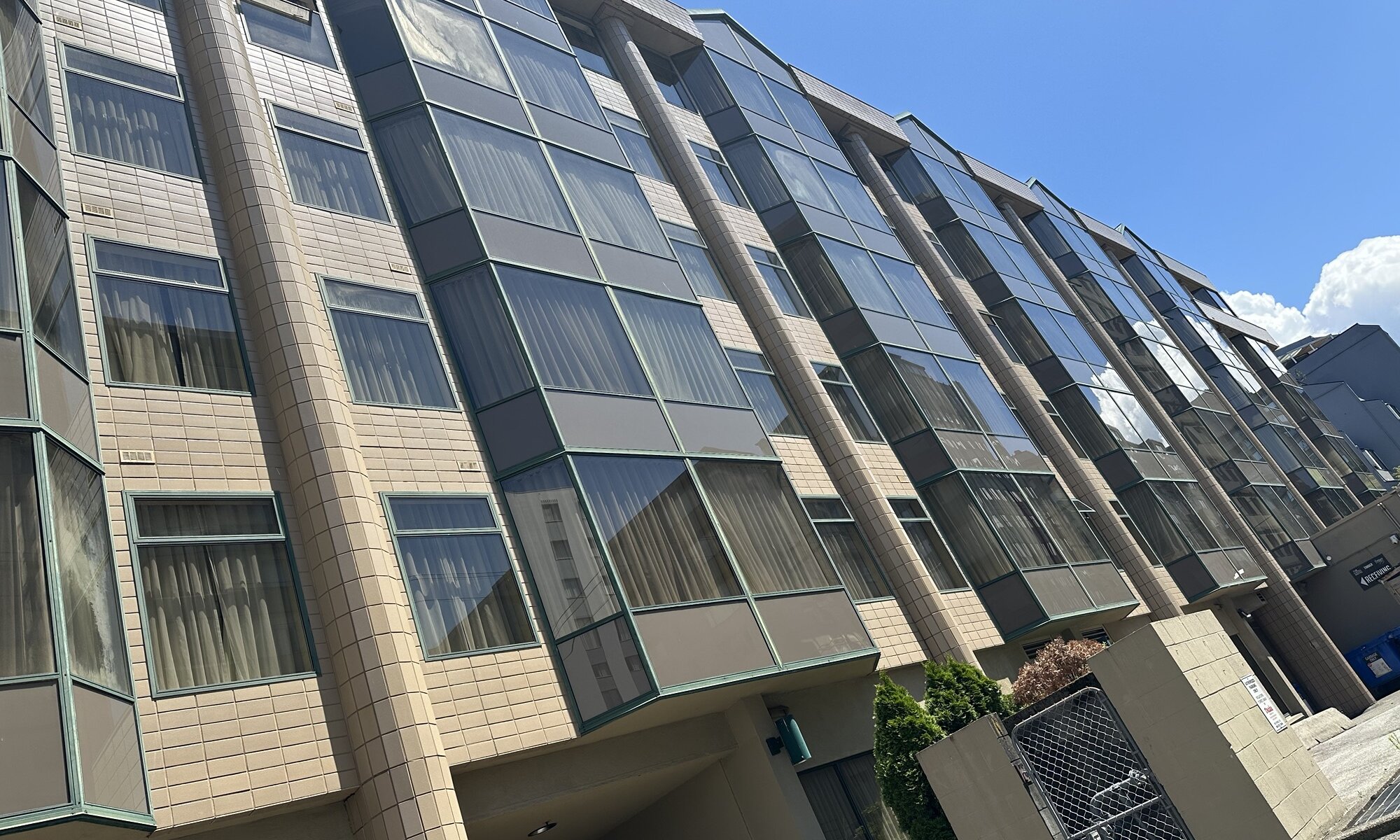The city of Vancouver is located on the traditional land of the First Nations called xʷməθkʷəy̓əm (Musqueam), Sḵwx̱wú7mesh (Squamish) and səlilwətaɬ (Tsleil-Waututh). Getting onto their unceded land is a very good reason to learn more about their traditions and the best place for that is the Museum of Anthropology quite a bit afar from downtown. It is part of the University of British Columbia (UBC) and located at their campus just a 20 minutes ride by car west along the coast.
Continue reading “First Nations”Stanley Park
North of Downtown Vancouver you’ll find Stanley Park which is a recreational zone on a half-peninsula named after conservative politician Frederick Arthur Stanley who was Governor General of Canada when it opened as a park in 1888. Stanley Park today has a large forest, contains the Vancouver Aquarium and offers long bicycle routes along the shore (‘seawall‘) giving you great views on the city center and the aeroboat harbor.
Continue reading “Stanley Park”Coral paradise
Vancouver is a city at the Pacific Ocean and for sure you would want to know a bit about sea life. For that reason there’s the amazing Vancouver Aquarium located within Stanley Park. The Vanaqua is the largest marine science center at Canada and was opened in 1956. Today there are 300 species of fish that you can admire, but to me the real stars are the local corals on display that have been beautifully set in scene.
Continue reading “Coral paradise”CAD
Currency of Canada is of course the Canadian Dollar (CAD, $ or C$). It is divided into 100 Cents and exists since 1871 when it became the first uniform currency for all Canadian provinces. There are coins for one and two dollars, as well as cent coins mostly showing wildlife of Canada. The banknotes from five to 100 $ currently show Canadian innovations from elements of the ISS and trains to insulin. The issue is that you’ll probably won’t get to see them as Canada has gone cashless nearly everywhere.
Continue reading “CAD”Granville Island
Underneath the Granville Bridge you’ll find Granville Island, a half-peninsula within the False Creek. It is an artificial island created to host industry and it was converted in the 1970s and attracts many visitors these days. Highlight is the Granville Island Public Market that sells gourmet food which gives you the chance to try a lot of different local produce. It is surrounded by bars and restaurants and you can conveniently sit at the shore of the False Creek and enjoy views on the sea arm.
Continue reading “Granville Island”Aquabus
Public transport at Vancouver relies on the fantastic automated SkyTrain flying through the city as well as busses. But the most lovely means of transport is for sure the Aquabus: little boats operated by just one person each touring clockwise on the False Creek. Just jump on board, tell the operator how far you want to go and buy a ticket from them via credit card directly while floating on the water. Perfect for a round course with beautiful views or to access some nice places across the city.
Continue reading “Aquabus”Science World
It is impossible to overlook Science World at the eastern end of False Creek: it is located in a large geodesic dome created for the world exhibition Expo 86. Since 2005 this dome contains a nice science museum with many experiments suitable for smaller kids and teenagers – but even adults can have a lot of fun there by experimenting with different natural phenomena.
Continue reading “Science World”Gastown
The historic city quarter Gastown can be found in the east of Downtown Vancouver. It was once the germ cell of the city of Vancouver and a very industrial area with a harbor and a saw mill; the place is named after the first innkeeper John ‘Gassy Jack’ Deighton. Gastown burned down in 1886 and there are not many buildings that survived. Icon is the steam-powered clock located at the intersection of Water Street and Cambie Street. Every hour it gives a whistle four times and blows steam once.
Continue reading “Gastown”Canada Day
Canada Day is celebrated every year on July 1st to commemorate the founding of the Dominion of Canada in 1867, when the British North America Act (now known as the Constitution Act, 1867) united the colonies of Ontario, Quebec, New Brunswick, and Nova Scotia into one country. Initially called Dominion Day, the holiday marked the birth of Canada as a self-governing nation within the British Empire. The name was officially changed to Canada Day in 1982, following the patriation of the Canadian Constitution. Today, Canada Day is a national holiday that reflects the country’s pride in its history, culture, and diversity.
Continue reading “Canada Day”The Listel
As I started my trip to Canada at Vancouver, The Listel was my very first hotel in the country. And it is a good one as it is located in downtown Vancouver on Robson Street with lots of stores and restaurants surrounding it. From here you can walk or cycle to the Waterfront, Stanley Park and Gastown, I even hiked to Hornby Street Aquabus stop to get to Granville Island (but don’t underestimate the inclination). The Listel is decorated with art and offers water dispensers on every floor – carrying you’re own reusable water bottle here is so normal that I had to buy me one already on the first day (and refill opportunities are available in many, many places).
Continue reading “The Listel”